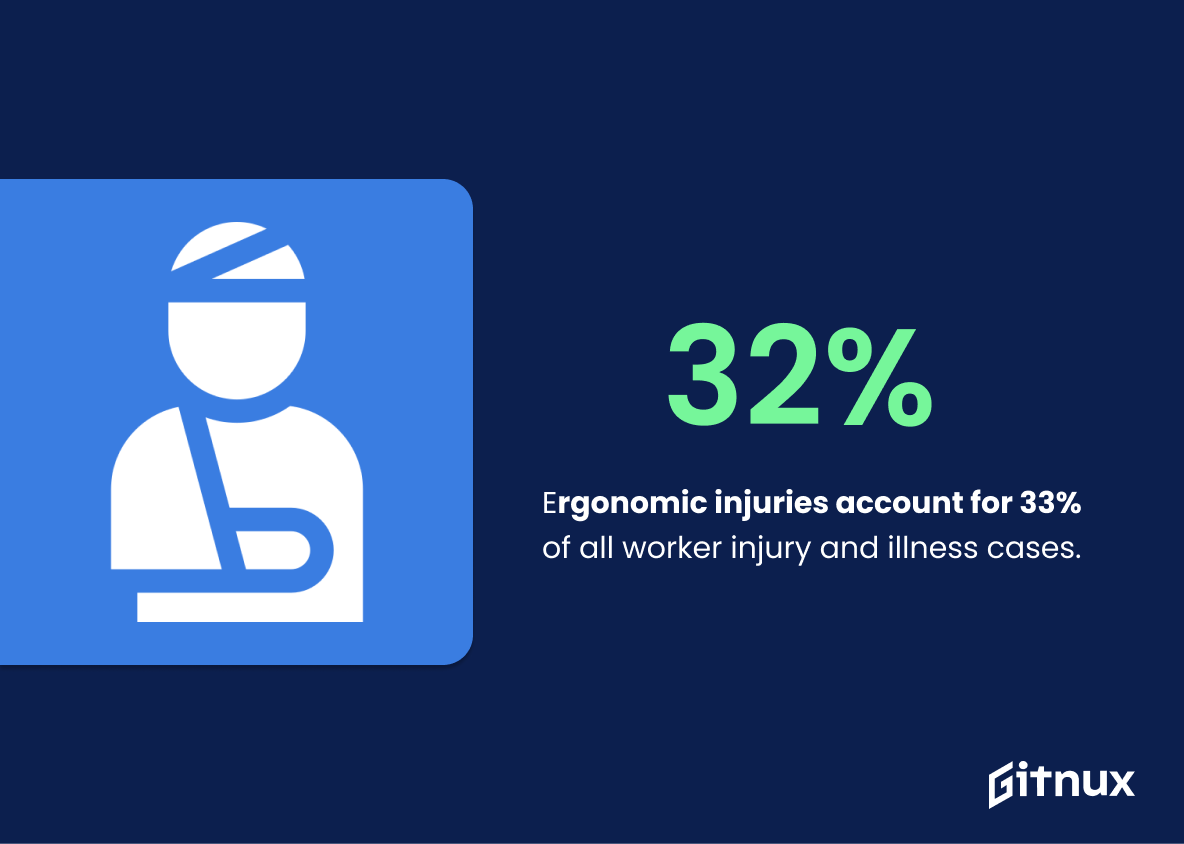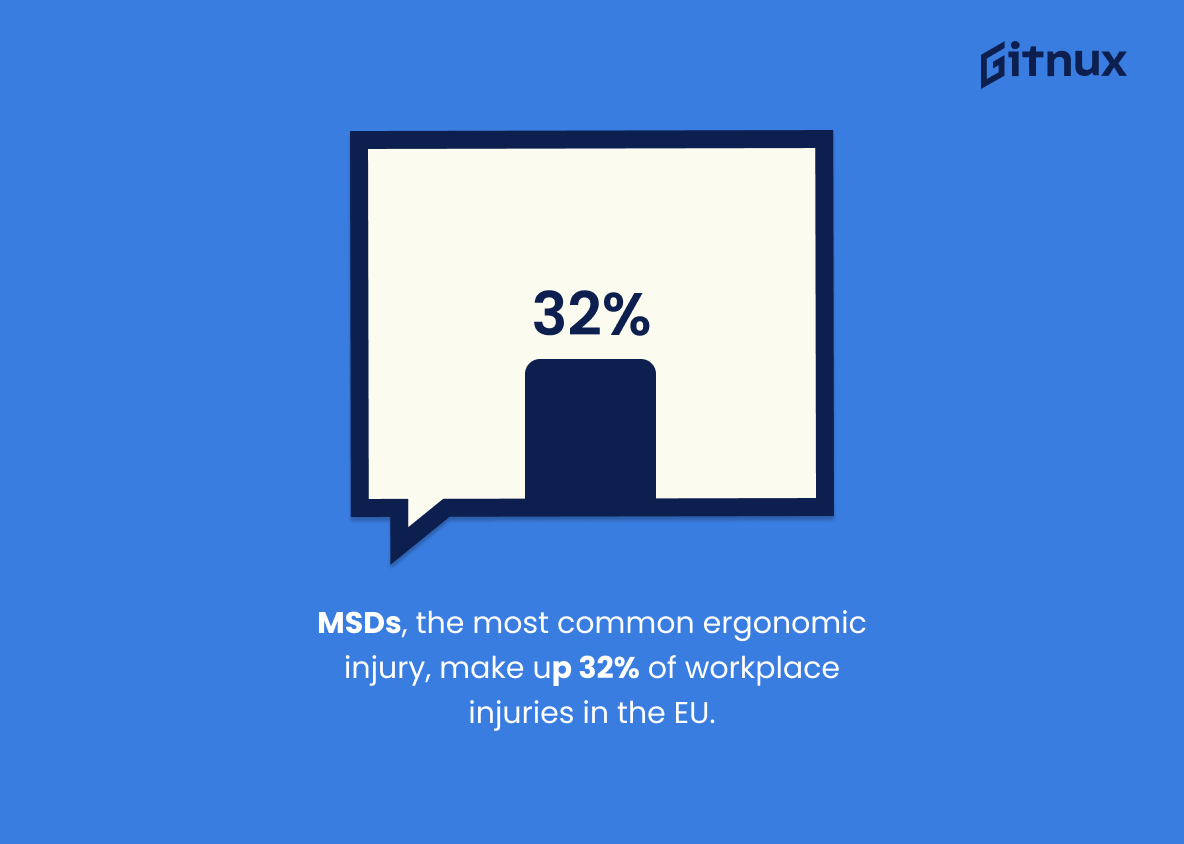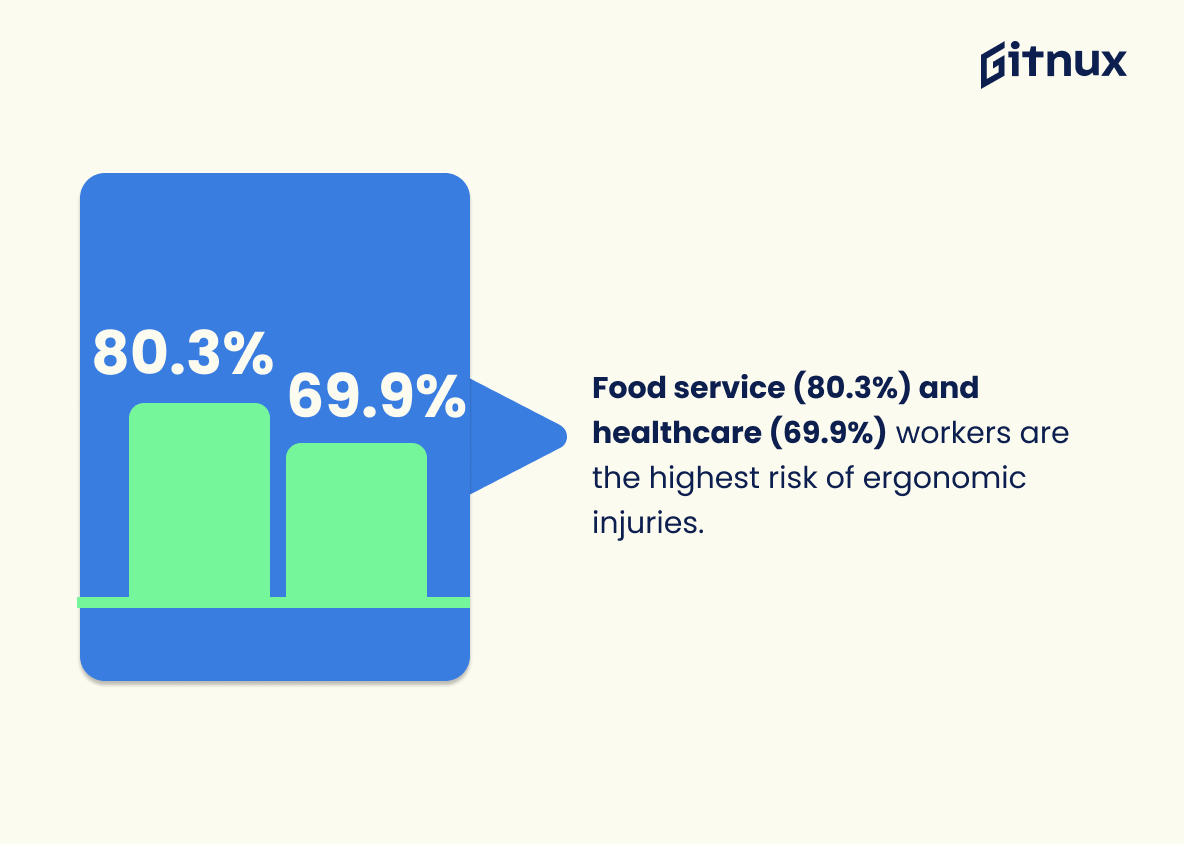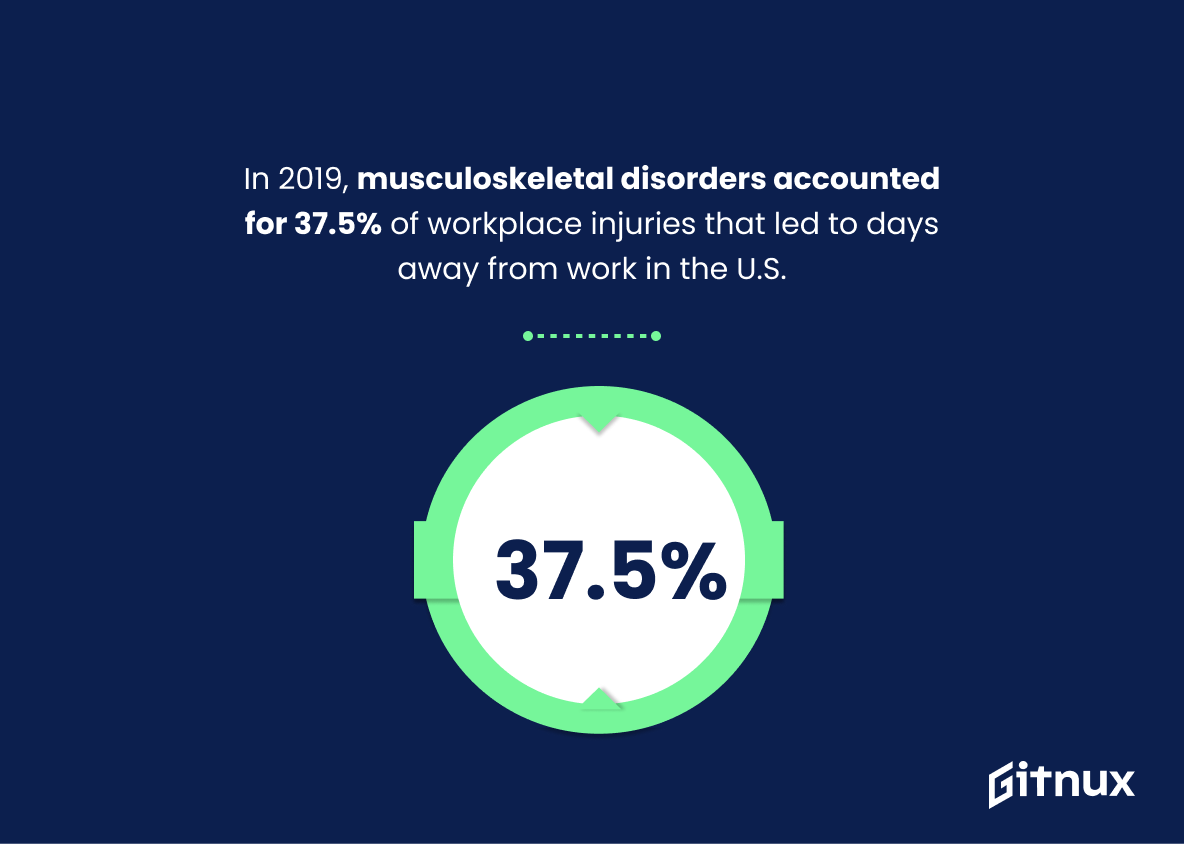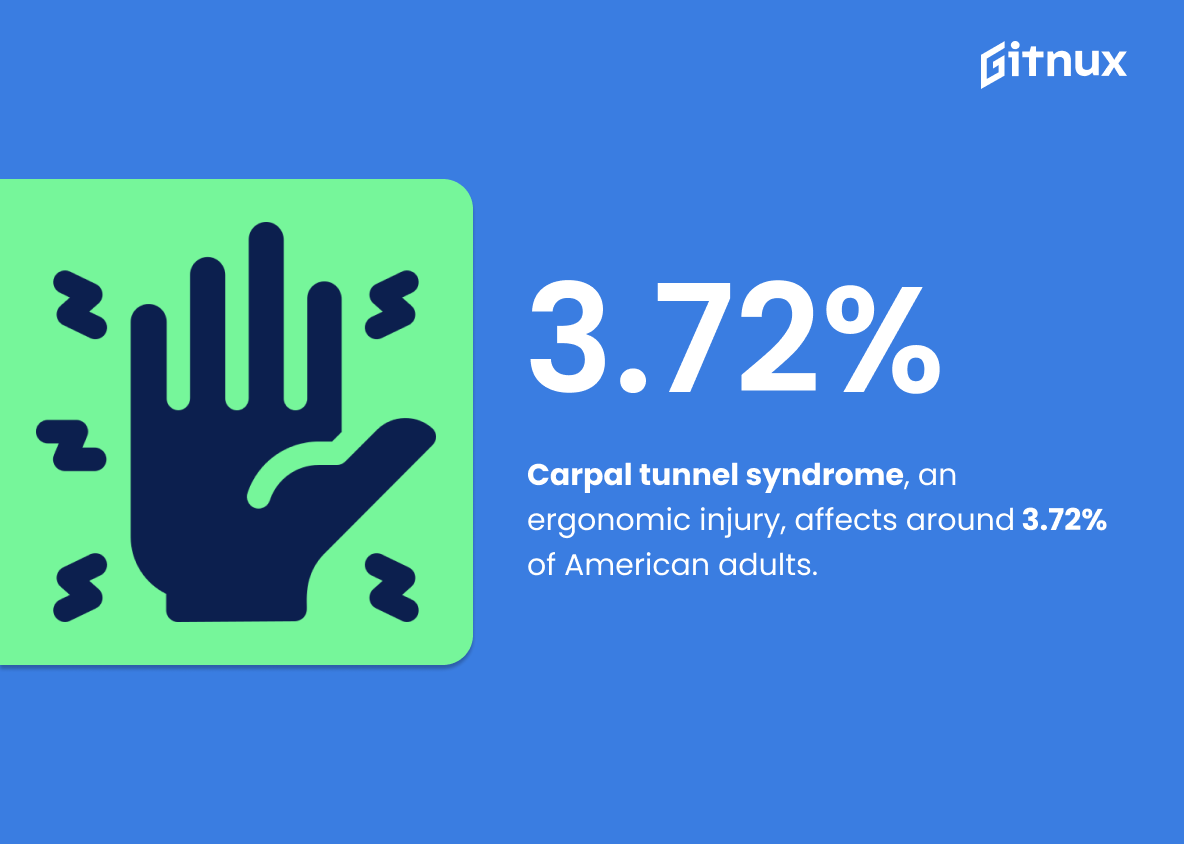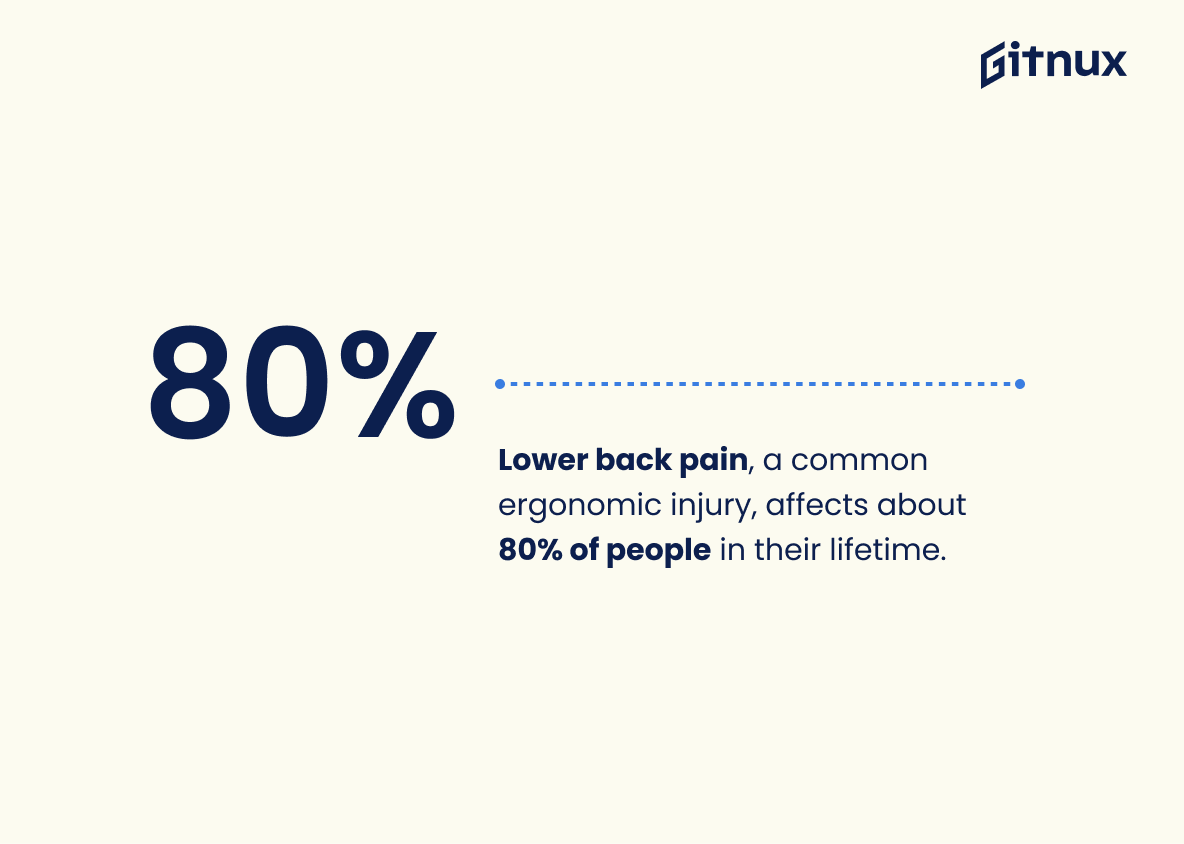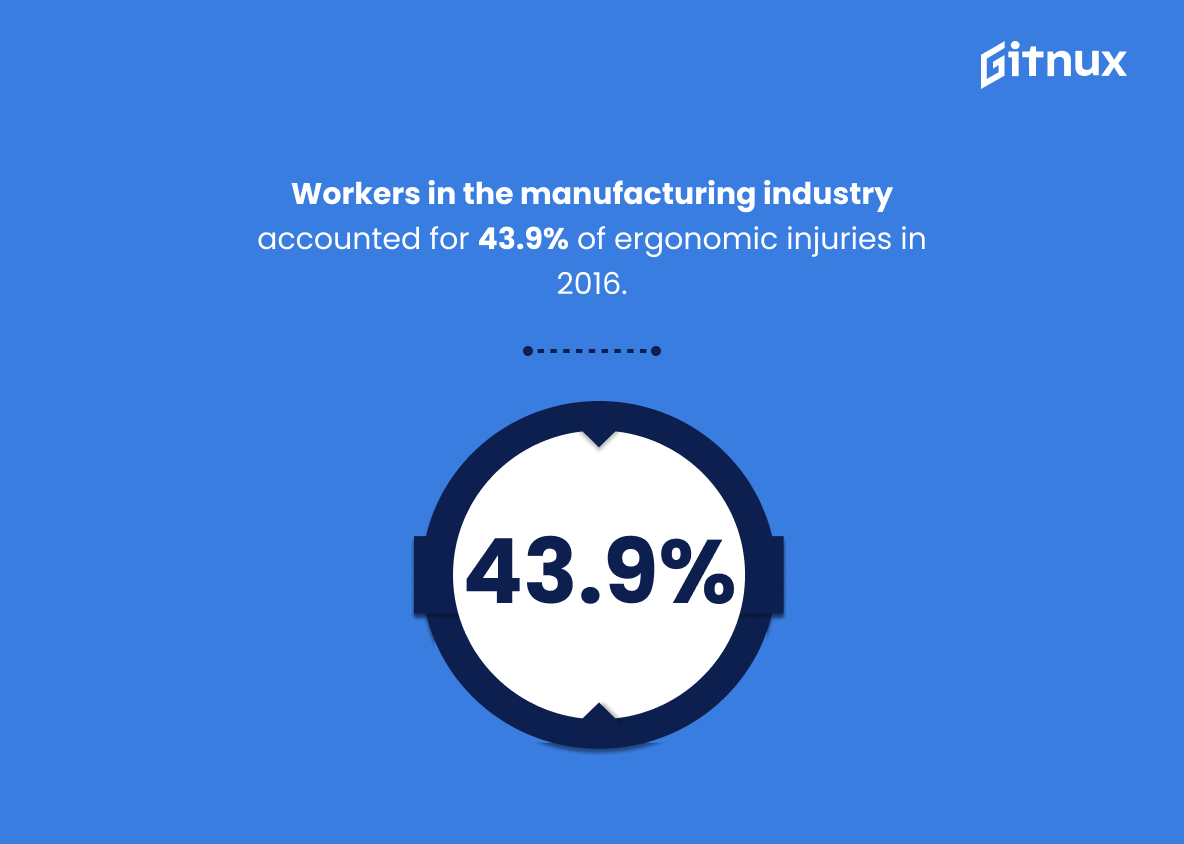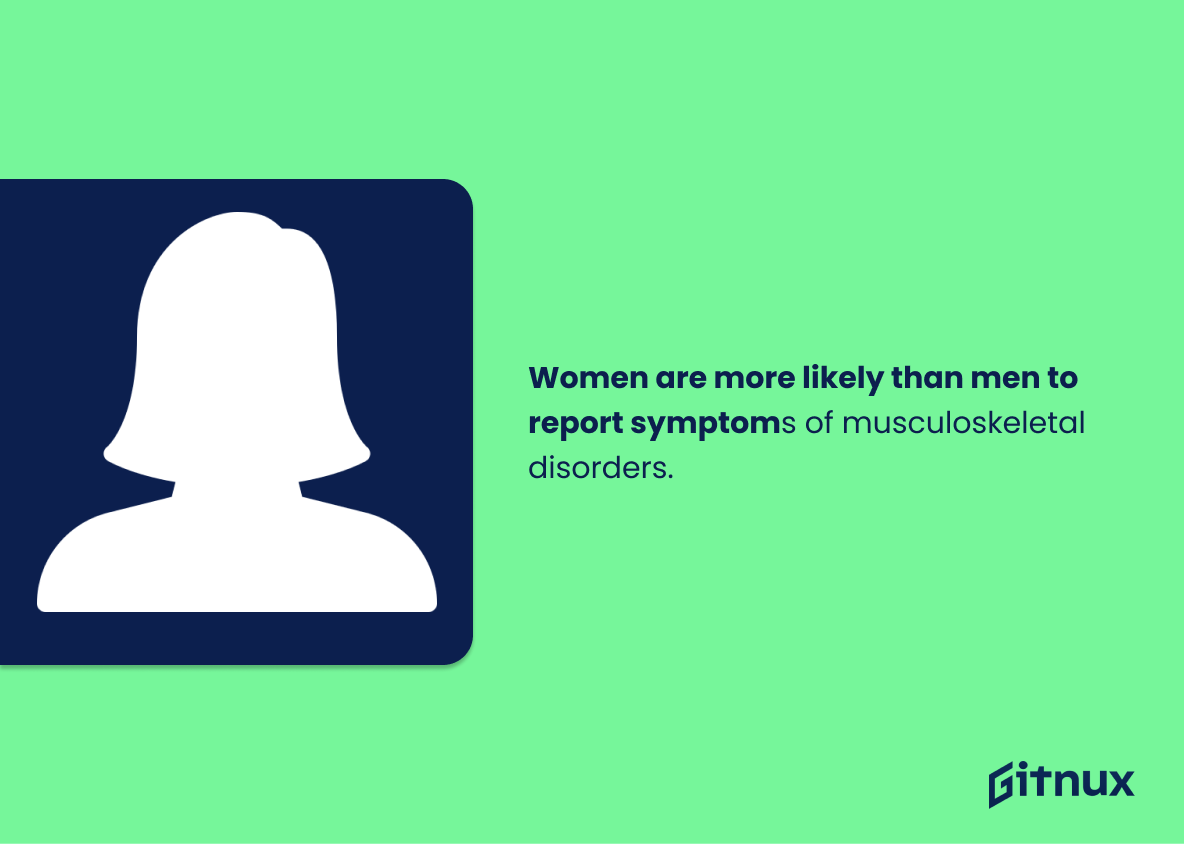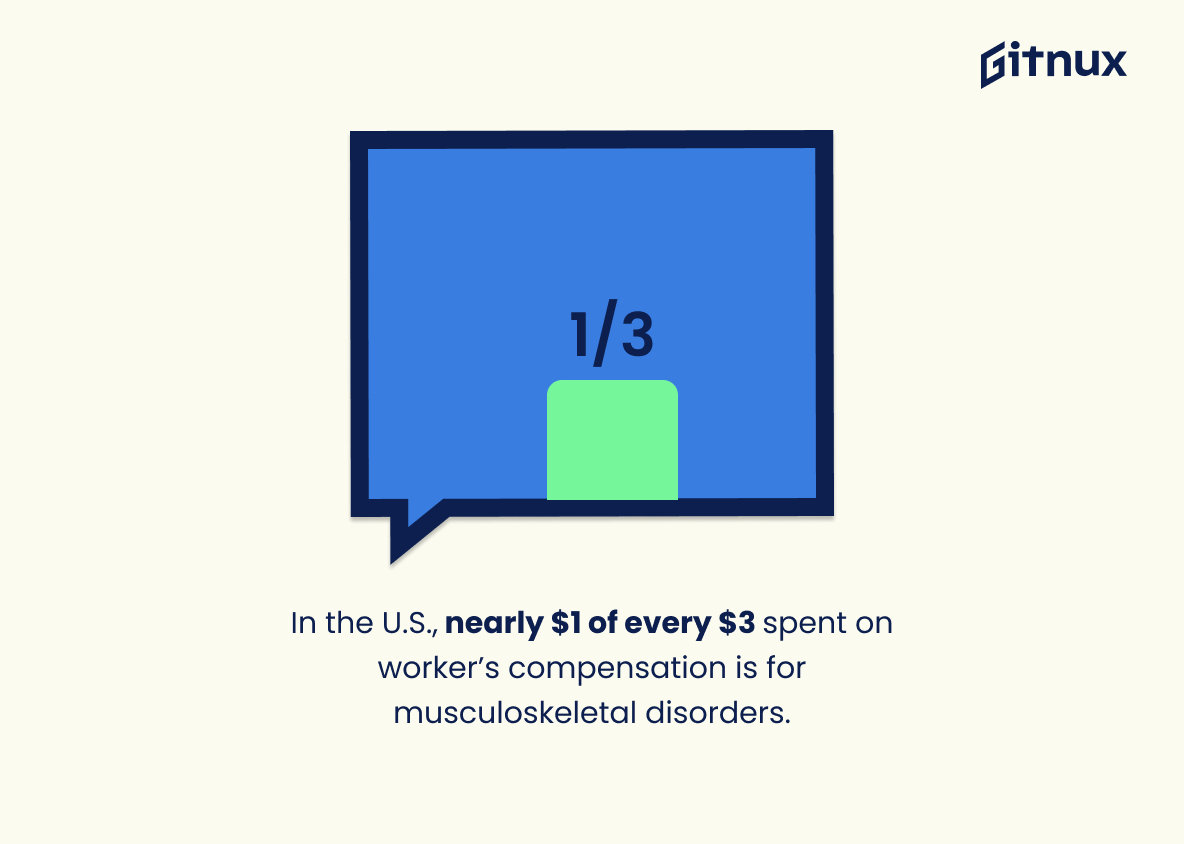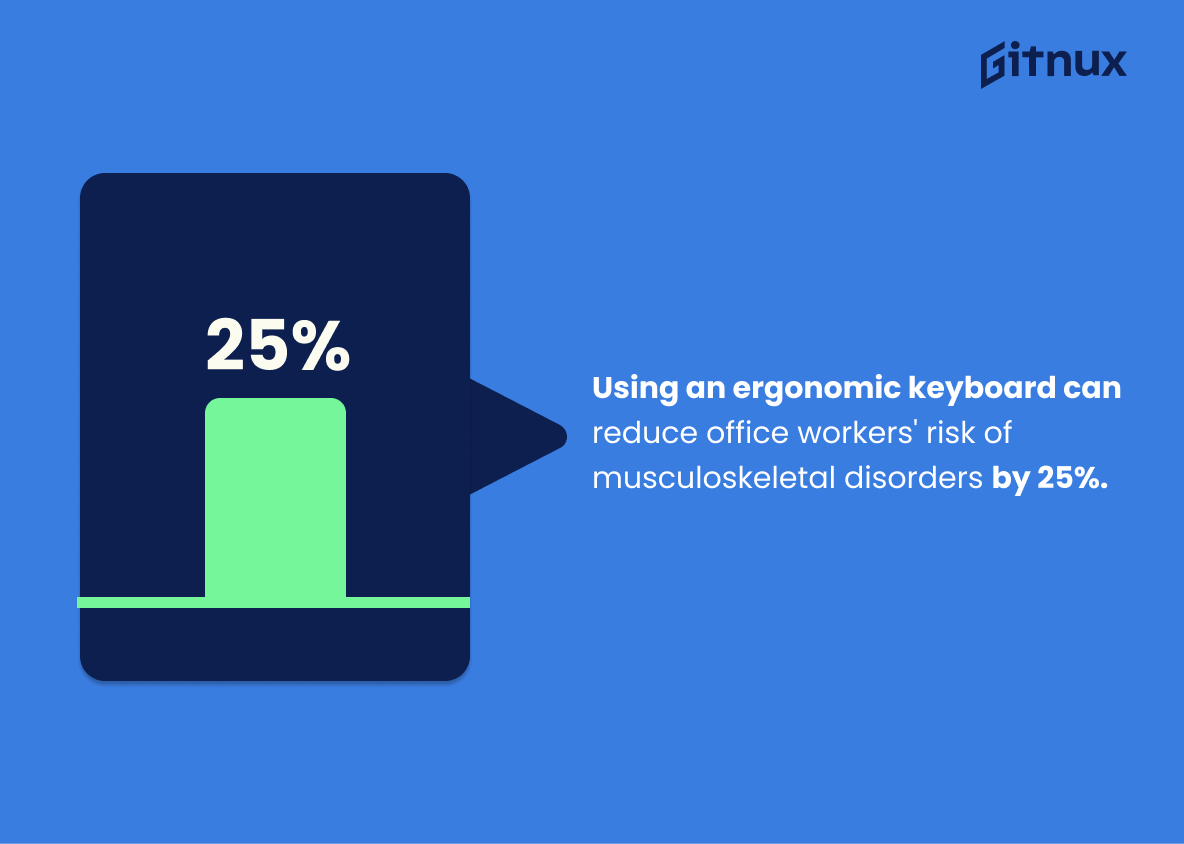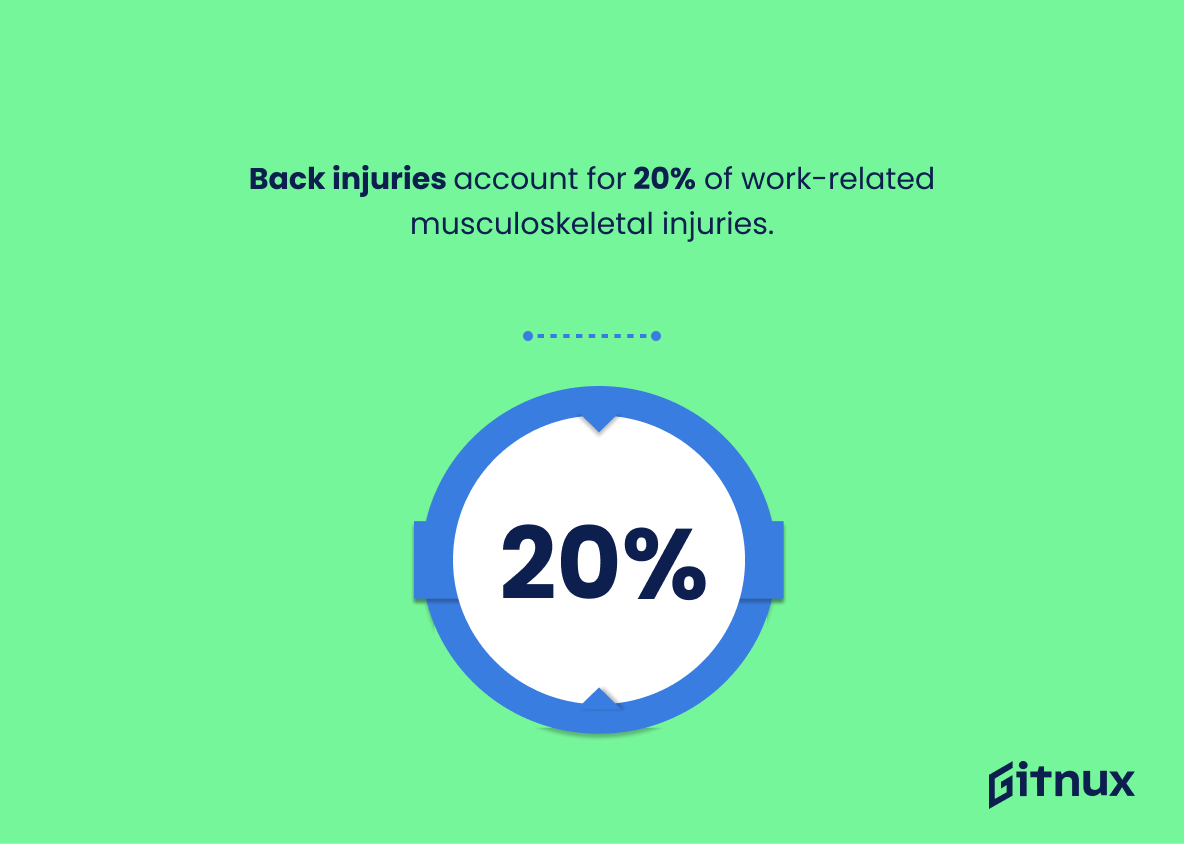Ergonomic injuries, accounting for 33% of all worker cases, are a significant workplace hazard. Musculoskeletal disorders (MSDs), comprising 32% of all European Union workplace injuries, dominate these. MSD claims average around $8,300, hitting food services and healthcare workers hardest. In 2019, MSDs made up 37.5% of U.S. work-related illnesses causing days off work. Carpal tunnel syndrome has a 3.72% prevalence among American adults.
On average, MSD sufferers take ten days off work. Roughly 80% experience lower back pain in their lives. Construction and manufacturing sectors have high injury rates of 11-30% and 43.9% respectively. Women report more symptoms. Nearly a third of worker’s compensation expenses, rising to 58% in Australia, goes to treating MSDs annually. Prevention could cut costs by 37%.
Ergonomic interventions, such as ergonomic keyboards, can mitigate risks by 25%. Broad business implementation could decrease MSD cases by 59%. With 20 million Americans affected annually, prioritizing prevention of these issues could lead to healthier workplaces worldwide.
Ergonomic Injury Statistics Overview
The average cost of a work-related musculoskeletal disorder (MSD) claim is approximately $8,300.
This statistic is a stark reminder of the financial burden that ergonomic injuries can impose on businesses. With an average cost of $8,300 per MSD claim, it is clear that ergonomic injuries can have a significant impact on a company’s bottom line. This highlights the importance of taking proactive steps to prevent ergonomic injuries in the workplace.
Workers in food services (80.3% of workers) and healthcare (69.9% of workers) are at the highest risk for ergonomic injuries.
This statistic is a stark reminder of the prevalence of ergonomic injuries in the food services and healthcare industries. It highlights the need for employers in these sectors to prioritize ergonomic safety and take steps to reduce the risk of injury for their workers.
In 2019, musculoskeletal disorders accounted for 37.5% of workplace injuries that led to days away from work in the U.S.
This statistic is a stark reminder of the prevalence of musculoskeletal disorders in the workplace, highlighting the need for employers to prioritize ergonomic safety in order to protect their employees from injury. It is a powerful illustration of the importance of ergonomics in the workplace, and serves as a call to action for employers to take steps to reduce the risk of musculoskeletal injuries.
Carpal tunnel syndrome, a type of ergonomic injury, has a prevalence rate of approximately 3.72% in American adults.
This statistic is a stark reminder of the prevalence of carpal tunnel syndrome in American adults, highlighting the importance of understanding ergonomic injury statistics. It serves as a call to action for individuals to take preventative measures to protect themselves from this type of injury.
In 2019, the median days away from work for musculoskeletal disorder cases was 10 days.
This statistic is a powerful indicator of the prevalence of musculoskeletal disorders in the workplace. It highlights the importance of ergonomics in the workplace, as musculoskeletal disorders can lead to significant time away from work and can have a major impact on employee productivity. This statistic is a reminder that ergonomic injury prevention is essential for maintaining a safe and productive workplace.
Lower back pain, a common ergonomic injury, affects around 80% of the population at some point in their lifetime.
This statistic is a stark reminder of the prevalence of lower back pain, a common ergonomic injury, in our society. It serves as a powerful reminder that ergonomic injuries are a real and serious issue that affects a large portion of the population. This statistic should be taken seriously and should be a call to action for employers and individuals to take steps to prevent and reduce the risk of ergonomic injuries.
Approximately 11-30% of construction workers are at risk of developing work-related musculoskeletal disorders.
This statistic is a stark reminder of the prevalence of ergonomic injuries in the construction industry. It highlights the need for employers to take proactive steps to protect their workers from the physical strain of their jobs. It also serves as a warning to workers to be mindful of their own safety and to take the necessary precautions to avoid developing musculoskeletal disorders.
Workers in the manufacturing industry accounted for 43.9% of ergonomic injuries in 2016.
This statistic is a stark reminder of the importance of ergonomic safety in the manufacturing industry. It highlights the need for employers to prioritize ergonomic safety measures in order to protect their workers from injury. It also serves as a warning to workers in the manufacturing industry to be aware of the risks associated with their job and to take the necessary precautions to avoid ergonomic injuries.
Women are more likely than men to report symptoms of musculoskeletal disorders.
This statistic is significant in the context of ergonomic injury statistics because it highlights the need for greater awareness of the risks of musculoskeletal disorders among women. Women are more likely to suffer from these conditions due to their anatomy, lifestyle, and other factors, and it is important to recognize this in order to ensure that women receive the proper care and attention they need to prevent and treat these conditions.
In the U.S., nearly $1 of every $3 spent on worker’s compensation is for musculoskeletal disorders.
This statistic is a stark reminder of the prevalence of musculoskeletal disorders in the workplace. It highlights the need for employers to prioritize ergonomic safety in order to reduce the risk of injury and the associated costs. It also serves as a warning to workers to be mindful of their posture and movements while on the job.
In 2017, 264,000 cases of work-related musculoskeletal disorders were reported in the United Kingdom.
This statistic is a stark reminder of the prevalence of work-related musculoskeletal disorders in the United Kingdom. It highlights the need for employers to take proactive steps to reduce the risk of such injuries, and for workers to be aware of the potential for such injuries and take steps to protect themselves.
Office workers can reduce their risk of musculoskeletal disorders by 25% by using an ergonomic keyboard.
This statistic is a powerful reminder of the importance of ergonomic keyboards in reducing the risk of musculoskeletal disorders. It highlights the potential for office workers to significantly reduce their risk of injury by investing in an ergonomic keyboard. This is an invaluable piece of information for anyone looking to protect themselves from the physical strain of office work.
Back injuries account for 20% of work-related musculoskeletal injuries.
This statistic is a stark reminder of the prevalence of back injuries in the workplace, highlighting the need for employers to take proactive steps to reduce the risk of musculoskeletal injuries. It serves as a powerful reminder that ergonomic injury prevention should be a priority for any organization that values the health and safety of its employees.
An estimated 20 million workers experience work-related musculoskeletal disorders each year in the United States.
This statistic is a stark reminder of the prevalence of work-related musculoskeletal disorders in the United States. It highlights the need for employers to take proactive steps to reduce the risk of such injuries, such as providing ergonomic furniture and equipment, and implementing proper safety protocols. It also serves as a warning to workers to be mindful of their own safety and take steps to protect themselves from such injuries.
After instituting ergonomic interventions, businesses report a 43% reduction in musculoskeletal disorders among workers.
This statistic is a powerful testament to the effectiveness of ergonomic interventions in reducing musculoskeletal disorders among workers. It demonstrates that businesses can take proactive steps to protect their employees from injury and improve their overall health and wellbeing. This is an important point to make in a blog post about ergonomic injury statistics, as it shows that there are tangible benefits to implementing ergonomic interventions.
The implementation of ergonomic interventions can reduce the likelihood of developing work-related musculoskeletal disorders by 59%.
This statistic is a powerful testament to the effectiveness of ergonomic interventions in preventing work-related musculoskeletal disorders. It highlights the importance of ergonomic interventions in reducing the risk of developing such disorders, and serves as a reminder of the potential benefits of implementing such measures.
Conclusion
Ergonomic injuries are a serious issue in the workplace, with statistics showing that they account for 33% of all worker injury and illness cases. Musculoskeletal disorders (MSDs) make up 32% of all workplace injuries in the European Union and 37.5% of those leading to days away from work in the U.S., while carpal tunnel syndrome has a prevalence rate of 3.72%. Workers in food services and healthcare have higher risks than other industries, as do construction workers who can be at risk 11-30%.
Lower back pain affects around 80% of people at some point during their lifetime, making it one of the most common ergonomic injuries reported worldwide. The average cost per claim is approximately $8,300 but prevention measures such as ergonomic interventions can reduce this figure by 59%, resulting in fewer musculoskeletal disorder cases overall – 20 million each year across America alone – along with reduced costs associated with them by 43%.
Ergonomics should therefore not be overlooked when considering safety protocols within any industry or organization; taking steps to prevent these types of injuries could save businesses time and money while protecting employees’ health too.
References
0. – https://www.researchgate.net
1. – https://www.oshaeducationcenter.com
2. – https://www.osha.gov
3. – https://www.pubmed.ncbi.nlm.nih.gov
4. – https://www.ncbi.nlm.nih.gov
5. – https://www.oem.bmj.com
6. – https://www.osha.europa.eu
7. – https://www.tandfonline.com
8. – https://www.ninds.nih.gov
9. – https://www.bls.gov
10. – https://www.cdc.gov
11. – https://www.hse.gov.uk
